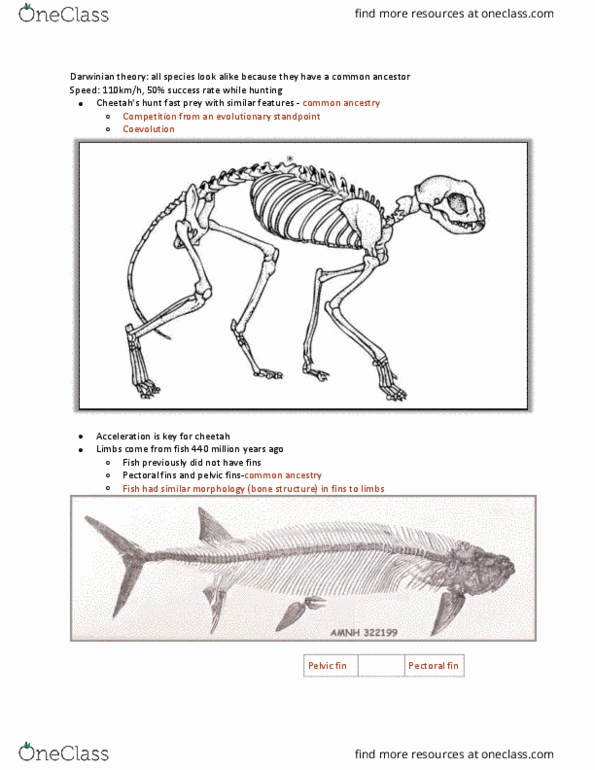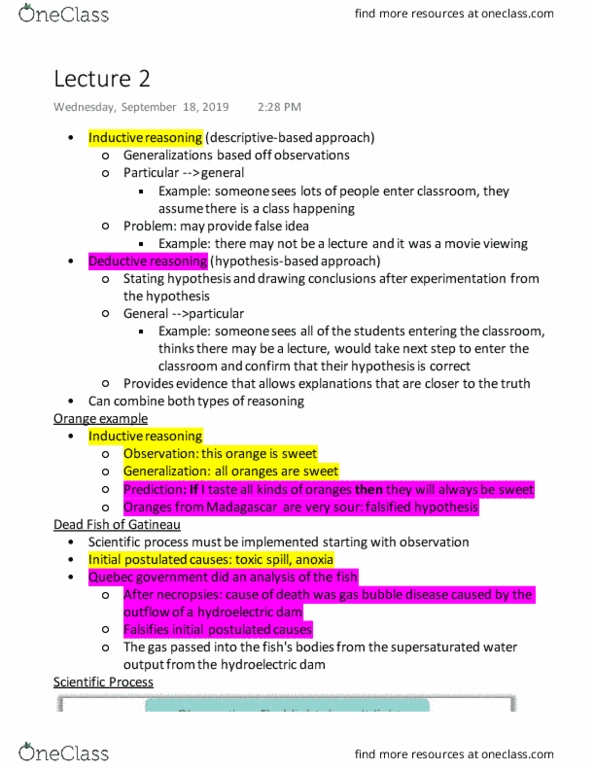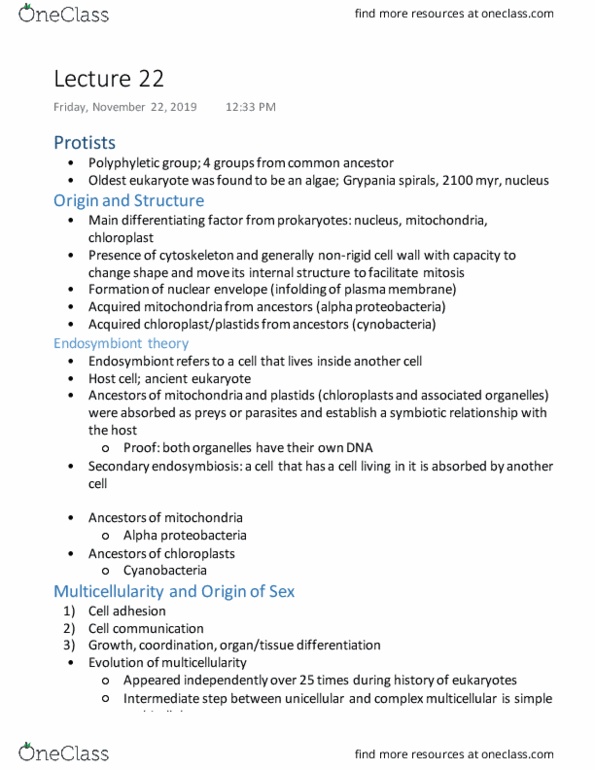BIO 1130 Lecture Notes - Lecture 26: Alphaproteobacteria, Nuclear Membrane, Endosymbiont
BIO 1130 verified notes
26/26View all
Document Summary
Oldest eukaryote was found to be an algae; grypania spirals, 2100 myr, nucleus. Main differentiating factor from prokaryotes: nucleus, mitochondria, chloroplast. Presence of cytoskeleton and generally non-rigid cell wall with capacity to change shape and move its internal structure to facilitate mitosis. Formation of nuclear envelope (infolding of plasma membrane) Endosymbiont refers to a cell that lives inside another cell. Ancestors of mitochondria and plastids (chloroplasts and associated organelles) were absorbed as preys or parasites and establish a symbiotic relationship with the host. Secondary endosymbiosis: a cell that has a cell living in it is absorbed by another cell. Appeared independently over 25 times during history of eukaryotes. Intermediate step between unicellular and complex multicellular is simple multicellular multicellular. Increased complexity allows differentiation of cell types with organism. Volvox: empty ball made of 50000 bi-flagellated unicellular organisms connected by strand of cytoplasm. Able to use taxis (eye spots assosiated with photosynthesis on one side)




